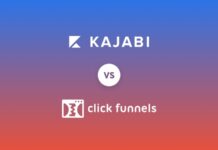Plasma donation is necessary for saving lives and advancing scientific studies, but preserving donors may be challenging. For facilities like BioLife, preserving donor engagement is prime, whether or not they’re new or returning. Many individuals donate once and no longer go back, impacting the plasma delivery essential for treatments. This text explores how BioLife’s donor retention strategies no longer only encourage go-back visits but additionally reward donors with factors and measure retention prices efficiently.
Discover how BioLife complements the donor level for both new and returning participants, and study their strategies for always improving donor retention. Biolife offers regular coupon codes for donors like a recent coupon is biolife coupon codes. If you use this coupon code you can get a good amount of compensation for plasma donation.
What Is Donor Retention?
Donor retention is defined as the ability of an organisation to retain donors after their first visit. BioLife’s donor retention programs are developed to maintain relationships with existing donors so that these donors can keep coming back to the centre and get motivated to be attached to the plasma donation process more permanently.
It is very important to sustain a constant supply of plasma as it is used in many medical treatments. To further motivate donors, BioLife introduces a biolife referral bonus for 2024. This coupon code provides financial incentives or discounts, enhancing the overall donor experience.
Importance of Retaining Donors in Plasma Donation:
Donor retention is important for several reasons:
- Plasma supply: The stable donors are the ones that help ensure predictable plasma collection. This is important for people who rely on medicines derived from plasma.
- Cost-saving: Getting a new donor requires a lot of work; therefore, retaining the current ones saves costs.
- Relationship building: By retaining donors, relationships grow since regular donors develop trust in the process as well as the organisation.
BioLife’s Donor Retention Strategies
BioLife uses various donor retention strategies involving recognition and rewarding loyal donors while making their experience of donating convenient to keep the donors coming back.
Personalized Donor Engagement
BioLife makes personal contact with the donors through communication. The email campaigns and text messages along with mobile application notices keep on informing the donors about active promotions, plasma demand, and scheduled appointments. This will help directly engage the donors to feel themselves valued, thus keeping plasma donation active on their radar for donor retention by BioLife.
Reward Programs and Recognition
Many incentive programs fall under donor retention. In this regard, BioLife provides compensation after every donation. The donors get encouraged to come again and donate through the reimbursement they receive for each donation session. Another strategy includes loyalty programs in the form of bonuses or gift cards for frequent donations. This is one of the most vital incentives in increasing donor retention with BioLife.
Flexible scheduling and appointment reminders
Other reasons may include scheduling. On this, BioLife is flexible. They offer appointment flexibility via their mobile application and web. Their scheduling also reminds donors of their times, hence easy for the donors to make time in their busy lives.
How BioLife Calculates Donor Retention Rate?
An essential part of grasping donor retention is being capable of calculating donor retention rates. BioLife makes use of this charge to determine the effectiveness of their donor retention strategies and regulates them as fundamental.
The formula for Donor Retention Rate
To calculate donor retention rate, BioLife typically uses this formula:
Donor Retention Rate = ((Number of returning donors in a specific period) ÷ (Number of donors at the beginning of that period)) × 100
By reading this fee regularly, BioLife can gauge how well their retention strategies are running. They also can perceive styles, along with specific times of the 12 months while retention might drop, and alter their approach accordingly.
Factors Impacting Donor Retention Rate
Several elements have an impact on BioLife’s donor retention price, including:
- Donor experience: How donors experience approximately the donation process, inclusive of wait instances, body of workers interactions, and facility cleanliness, can substantially impact retention.
- Incentives: Reward systems together with BioLife pay returning donors and can entice repeat donations, especially if they boom with frequency.
- Conversation: Ordinary observe-and promotional offers dispatched to donors help remind them to donate again.
Key Strategies for Increasing Donor Retention
BioLife seeks to retain donors through both new incentive mechanisms as well as enhancements to the current experience of donating.
Donor Experience Improvement
The core philosophy for donor retention is to make the donation process as painless as possible. BioLife leads the industry in investments for clean modern facilities, friendly staff, and the smoothest processes for every positive visit.
Competitive Incentives
Compensations can be quite a strong motivator for many plasma donors. BioLife will reward donors with competitive pay, which will leave the customers wanting more and thus encourage them to go back again. Specifically, BioLife pays returning donors more through special promotions and loyalty bonuses, thus making repeat donations more appealing.
Making the Donation Process Smooth
BioLife focuses on how to make the process of donation less time-consuming and easier. The centre keeps more donors since patients are processed fast with minimal wait times. Additionally, simple scheduling through the app and reminding those scheduled means there is a greater probability of returning donors.
FAQs About BioLife’s Donor Retention Strategies
1. What advantages does frequent plasma donation have at BioLife?
This process has been simplified to include rewards, including loyalty bonuses and competitive compensation for regular donors in the company BioLife, which have contributed to life-saving treatments, thus making the process fast and accessible for repeat donations.
2. What does BioLife do to track the donor retention rate?
BioLife has retention metrics, for example, the donor retention rate, measured through the proportion of donors going back within a time-specific framework. This helps BioLife in effectively reviewing its retention strategies.
3. How does BioLife attract new donors to return?
BioLife is communicating, giving incentives, and ensuring an excellent donor experience to encourage new donors to return.
4. What incentives does BioLife offer for frequent donors?
BioLife provides a wide array of incentives for frequent donors such as monetary compensation, loyalty bonuses, and many more. The more frequent the donor, the more possible rewards.
Conclusion
Donor retention is rather critical for a plasma centre like BioLife to have a plasma supply steady and reliable. Through effective donor retention strategies like personalised communication, competitive compensation, and a streamlined donation process, BioLife has been able to maintain an excellent retention rate.
Moreover, the calculation of the donor retention rate also enables them to constantly perfect their strategies that eventually result in better donor satisfaction as well as retention. Whether through incentives, as in the case of pay upon return for donors at BioLife or a positive donor experience, this says it all for BioLife’s commitment to keeping their donors coming back for the long term.




























































